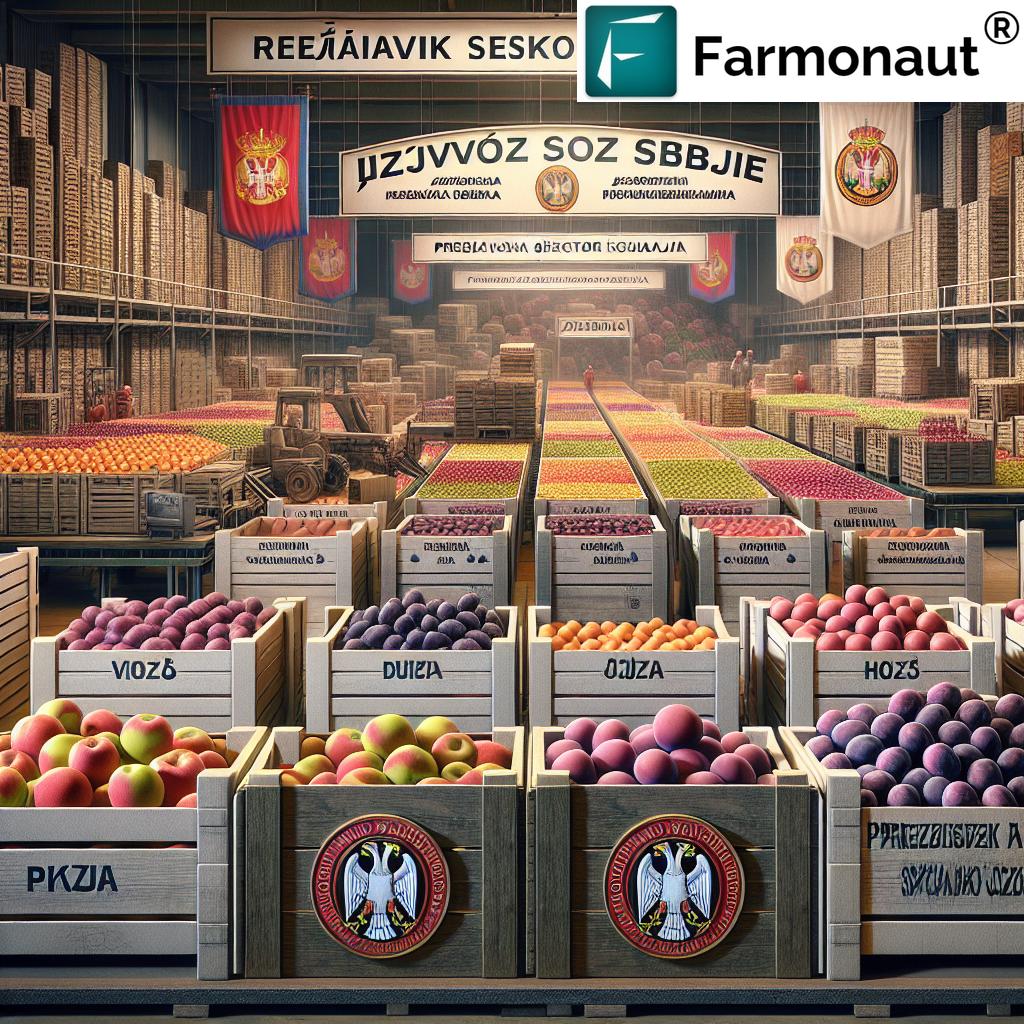Table of Contents
- Affordable Crop Insurance in Poland for Small Farms 2025: Summary & Overview
- Trivia: Crop Insurance Trends in Poland
- The Importance of Crop Insurance in Agriculture for Small Farms in Poland
- Current Crop Insurance Solutions: 2025 Landscape
- Comparison Table of Crop Insurance Options for Small Farms in Poland (2025)
- Government-Supported Crop Insurance in Rural Poland: How It Works
- Innovative & Index-Based Insurance Models: 2025 Outlook
- Cooperative and Group Insurance Schemes for Smallholder Farmers
- Accessibility: Expanding Crop Insurance Access in Rural Communities
- Farmonaut Satellite Technology: Affordable, Data-Driven Risk Management
- Premiums, Claims, and Policy Design: What Small Farms Should Know
- Key Challenges & Considerations in Crop Insurance Adoption for Small Farms
- Risk Management Insights: Building Sustainable Small Farms in Poland
- Future Outlook: Evolving Crop Insurance for Polish Smallholder Farmers
- Frequently Asked Questions: Affordable Crop Insurance in Poland 2025
- Conclusion
Did You Know?
“In 2025, over 70% of small Polish farms are eligible for government-backed affordable crop insurance schemes.”
Affordable Crop Insurance in Poland for Small Farms 2025: A Deep Dive
Affordable Crop Insurance Options for Small Farms in Poland: A 2025 Outlook
In the dynamic and unpredictable world of agriculture, smallholder farms in Poland face heightened exposure to climate change, adverse weather, market fluctuations, and pest outbreaks. This makes crop insurance in agriculture a vital risk management tool for securing community livelihoods and ensuring farm continuity—especially in rural areas. As we enter 2025, government-backed schemes, cooperative insurance models, and innovative insurance solutions are increasingly accessible to Polish small farms. These options are designed to be affordable, promote sustainable farming, and deliver resilience amid uncertainty.
Below, we explore the evolving landscape of crop insurance in Poland for small farms—summarizing the importance of insurance, major schemes available in 2025 (government/innovative/private/cooperatives), and how emerging technologies and policy support are shaping a more equitable and sustainable future for rural communities.
The Importance of Crop Insurance in Agriculture for Small Farms in Poland
Small farms often operate with limited financial buffers, making them especially vulnerable to risk events such as adverse weather, pest outbreaks, or market fluctuations. Crop insurance helps mitigate these risks by providing compensation when insured losses occur. This is critical for ensuring farm continuity and community stability in Poland’s robust rural economy.
- Crops cultivated on Polish smallholdings—wheat, cereals, potatoes, vegetables—are especially impacted by increasingly erratic climatic conditions due to climate change.
- Without affordable insurance, unexpected losses can devastate a farmer’s finances, disrupt local food supply, and stall rural economic development.
- Effective risk management is essential for promoting sustainable farming and securing the food chain for future generations.
Are there any affordable crop insurance options available for small farms? Absolutely, but understanding and accessing the right solution in 2025 is key.
Why do small farms need tailored insurance products?
- Smallholder farms are often overlooked by traditional insurance models that favor large agribusinesses.
- They face unique challenges, such as fragmented land, diverse crops, and local community dependencies—which require specialized, accessible products.
- In 2025, more policymakers and insurers recognize this, leading to better schemes tailored for rural Poland’s realities.
Current Crop Insurance Solutions: 2025 Landscape for Small Farms in Poland
The landscape of crop insurance in Poland has evolved significantly by 2025. Driven by government support, EU subsidies, increased awareness, and innovative models, small farms have more affordable insurance options than ever before.
Major Types of Crop Insurance Schemes in 2025
-
State-Supported & Subsidized Schemes:
These programs are backed by the polish government and the Common Agricultural Policy (CAP) of the European Union. Small farms can have their premium costs reduced by at least 50%, making coverage widely available and affordable. Such insurance products commonly cover hail, drought, frost, and flooding—major hazards impacting harvests. -
Index-Based and Data-Driven Models:
Leveraging weather data or satellite-based triggers for payouts, these innovative insurance models reduce administrative costs and improve transparency. Index insurance solutions are particularly tailored for smallholder farms and cost less due to automation. -
Cooperative and Group Insurance:
Local cooperatives and farming groups in rural communities can pool their risk, collectively bargain for insurance, and secure better premium rates. This communal approach is increasingly popular in 2025 due to the growth of digital platforms and government support for rural organizations. -
Private Insurer Packages:
Several private insurers now offer standardized insurance packages for Polish small farms, competing on both features and price. Many include climate-resilience add-ons and premium discounts for sustainable farming practices.
Importantly, are there insurance solutions for people living in rural areas of poland? – Yes! From government to innovative data-powered platforms, rural communities have never had more choices—and more of them are designed specifically to be accessible for smallholder farmers.
“Rural Poland saw a 15% rise in crop insurance adoption by small farms due to climate change risk in 2024.”
Comparison Table of Crop Insurance Options for Small Farms in Poland (2025)
| Scheme Name | Type | Estimated Annual Premium (€/ha) | Coverage Percentage (% of Loss) | Eligibility (Farm Size Limit) | Environmental Incentives | Notable Features |
|---|---|---|---|---|---|---|
| Polish State Crop Insurance (2025) | Government | €10-20 | 70%-90% | Up to 50 ha | Yes | 50%+ premium subsidy, covers hail, drought, frost, flood; CAP-aligned. |
| EU CAP Subsidized Insurance | Government/Hybrid | €8-22 | 80%-100% | Up to 75 ha | Yes | Additional incentives for organic or carbon farming; climate risk add-ons available. |
| Private Agri Insurer SmartPak | Private | €18-28 | 65%-90% | Up to 100 ha | Limited | Faster claims, custom deductible; digital enrollment. |
| Community/Cooperative Group Cover | Cooperative/Group | €6-14 | 70%-95% | Typically ≤ 80 ha (group pooled) | Generally Yes | Lower group premiums, risk pooling, community risk-sharing. |
| Index-Based Satellite Insurance | Private/Innovative | €7-16 | 70%-88% | Up to 60 ha | Yes | Automated claims based on weather/satellite data, quick payouts, eco-bonus options. |
This table compares top crop insurance options for Polish small farms in 2025—highlighting estimated premiums, loss coverage, and environmental incentives.
Government-Supported Crop Insurance in Rural Poland: How It Works
Poland’s government has made significant strides in developing agricultural insurance schemes that are especially supportive for small farms. These initiatives are vital in reducing premium costs and making coverage accessible throughout rural communities.
-
State Subsidized Premiums:
The State, aligned with the Common Agricultural Policy (CAP) and supported by the European Union, now subsidizes half or more of insurance premiums for qualifying smallholder farmers. -
Comprehensive Coverage:
Insurance products typically cover hail, drought, frost, and flooding. Some extend to pest outbreaks or disease. -
Eligibility:
Small farms (commonly under 50-75 ha) can apply; certain environmental incentives (such as for carbon farming or traceability) are available. -
How to Apply:
Through registered agricultural insurers, online portals, or in-person via advisory offices. Standardized packages are available for diverse crops.
Key Benefits for 2025 Smallholders:
- Direct financial compensation for insured losses helps maintain farm continuity.
- Reducing premium costs by over 50% makes coverage more affordable and attractive for small farms, compared to the past.
- Promotes sustainable agriculture practices via interconnected programs.
Innovative & Index-Based Insurance Models: 2025 Outlook
Polish farmers increasingly turn to innovative models to overcome challenges in traditional insurance—notably index-based solutions that leverage data and technology.
-
Satellite and Weather Parametric Insurance:
Payouts are triggered by independently verifiable data—such as rainfall levels, NDVI indices, or temperature thresholds—instead of lengthy, subjective assessments. This reduces administrative burden and can lower premiums. -
Automated Claims:
As soon as an adverse weather event is confirmed by data, the system initiates claims and compensation processes automatically. -
Affordability:
Lower operational costs (no need for manual field assessment) mean that premiums are often more affordable—especially tailored for smallholder farms. -
Environmental Add-Ons:
Some providers reward sustainable practices, such as carbon footprinting or supply chain traceability, with discounts or bonus coverage.
This digital transformation in crop insurance in agriculture is supporting more resilient, environmentally responsible farming communities in Poland.
Cooperative and Group Insurance Schemes for Smallholder Farmers
Cooperatives and group insurance models play a critical role for Polish smallholder farmers in 2025:
-
Risk Pooling:
By joining forces, small farms distribute risk, access lower premium rates, and benefit from collective bargaining power in negotiations with insurers. -
Community Support:
These models supporting continuity and stability—when some farms face insured losses, the group shares the burden so no one is left behind. -
Integration with Government Schemes:
Some schemes allow cooperative groups to access additional subsidies or environmental incentives. -
Flexible Coverage:
Group models adapt to local conditions and evolving climate risks, providing scalable solutions for various crop types (cereals, potatoes, vegetables, etc.).
Key for 2025: Cooperative insurance is one of the most promising options for affordable coverage among small farms in rural Poland.
Accessibility: Expanding Crop Insurance Access in Rural Communities
In 2025, access to insurance solutions for people living in rural areas of Poland has improved, thanks to:
-
Online Platforms:
Smallholder farmers can compare insurance products, review schemes, and apply online. Technologies such as satellite crop monitoring simplify enrollment and claim processes. -
Agricultural Extension Services:
Local advisors and community-based organizations help increase awareness and navigate application procedures. -
Improved Rural Connectivity:
Greater internet access allows remote villages to access digital insurance platforms—a crucial advance for the often-isolated regions of Poland. -
Government & NGO Initiatives:
Subsidized programs, mobile outreach, and financial literacy campaigns have started overcoming knowledge and trust barriers.
However, challenges persist. Ongoing efforts are needed to address financial literacy, product transparency, flexible payment plans, and ongoing community engagement.
Farmonaut Satellite Technology: Affordable, Data-Driven Risk Management
Affordable and accessible risk management through technology is driving the next wave of sustainable farming in Poland. At Farmonaut, we deliver satellite-driven insights for crop health monitoring, weather forecasts, and resource optimization—empowering Polish smallholder farmers to manage climate risks proactively and support insurance verification.
-
Satellite-Based Monitoring: Our multispectral satellites provide crucial vegetation health (NDVI), soil condition, and weather data, supporting smarter agricultural decisions and insurance verification.



- Jeevn AI Advisory System: Our AI-based advisory offers real-time weather alerts, yield forecasts, risk assessment, and localized insurance planning.
- Blockchain-Based Traceability: For traceability and supply chain authenticity, see our Traceability Solutions for added transparency in agricultural insurance and food integrity.
- Environmental Impact Monitoring: Track carbon footprint to qualify for eco-incentives in state and EU insurance programs. Learn more at our Carbon Footprinting page.
- API Access: Insurers and businesses can programmatically access satellite data via our API—see Developer Docs for more details.
- Crop Loan & Insurance: Explore how satellite-based monitoring can help lower the cost and fraud risk for loans and crop insurance at our Crop Loan & Insurance page.
At Farmonaut, our aim is to make satellite-based, AI-driven agricultural technologies both affordable and scalable for all Polish small farms—empowering them to thrive in a changing world.
Key Challenges & Considerations in Crop Insurance Adoption for Small Farms
While crop insurance has become more affordable and accessible in rural Poland, some challenges remain:
- Awareness Gaps: Some smallholder farmers are not aware of available programs, eligibility, or environmental incentives.
- Financial Literacy: Understanding premiums, deductibles, and claims documentation can still be difficult for some rural populations.
- Trust and Information: Perceived complexity or distrust of financial institutions can deter farm owners from enrolling.
- Changing Risks with Climate: Climate change-driven fluctuations in hazards mean that coverage needs are continually evolving.
- Administrative Barriers: Even digital forms and apps may require assistance for remote communities or the elderly.
Solutions: Ongoing education, community-based outreach, mobile-friendly platforms, and user-focused design are essential for closing these gaps.
Our Large Scale Farm Management app also supports onboarding for larger family groups and cooperatives.
Risk Management Insights: Building Sustainable Small Farms in Poland
Modern crop insurance in agriculture is more than just a financial safety net—it is a catalyst for building resilient, sustainable small farms in Poland. Here’s how:
-
Climate-Smart Insurance:
Supports adaptation as weather becomes more unpredictable; rewards proactive, sustainable land use practices (carbon farming, regenerative agriculture). -
Financial Stability:
Insurance payouts stabilize income, allowing for reinvestment into seeds, technology, and soil health—crucial for community livelihoods. -
Technology Integration:
When small farms use satellite technology (as in Farmonaut’s platform), they make more informed decisions and optimize claims, reducing disputes and administration delays. -
Fostering Cooperation:
Group and cooperative models encourage local community solidarity and ongoing awareness for best farming practices. -
Market Access:
Blockchain traceability builds consumer trust in Polish produce, opening markets and enabling premium pricing for quality, insured food products.
Future Outlook: Evolving Crop Insurance for Polish Smallholder Farmers
As we look to 2025 and beyond, the landscape of affordable crop insurance for small farms in Poland is set to become even more dynamic and sustainable:
-
More Tailored Insurance Products:
Data-driven risk assessment and digital platforms will enable ultra-localized coverage—tailored to each farm’s microclimate and crop profile. -
Increase in Environmental Incentives:
Linkage of insurance premium discounts with carbon farming, traceability, and regenerative practices. -
Greater Integration of Technology:
From satellite monitoring to AI-based risk advisory (Jeevn AI), all will support reduced costs and faster claim resolution. -
Policy Stability and Continued Subsidies:
Ongoing government and EU support for premium subsidies ensures smallholder farmers remain protected as climate risk increases. -
Continued Rural Financial Inclusion:
Enhanced awareness, simpler digital interfaces, and bundled products (loans, insurance, advisory) will make risk management easier for all.
Ultimately, Polish small farms who embrace these affordable insurance solutions and technologies will be best positioned for resilient, profitable, and sustainable growth—no matter how unpredictable the agricultural world becomes in 2025 and beyond.
Frequently Asked Questions: Affordable Crop Insurance in Poland for Small Farms (2025)
Q1: Are there any affordable crop insurance options available for small farms in Poland?
Yes. In 2025, there are multiple affordable insurance programs for small farms in Poland, including government-subsidized schemes (reducing premiums by over 50%), cooperative/group cover, and innovative index-based insurance models using weather and satellite data. These are specifically designed to meet the needs of smallholder farmers and rural communities.
Q2: How does crop insurance in agriculture help rural farmers manage risks?
Crop insurance enables farmers to receive compensation when insured losses (drought, hail, frost, flood, pest outbreaks) occur. This financial safety net supports farm continuity, stabilizes income, and protects rural livelihoods in Poland’s unpredictable climate.
Q3: Are there insurance solutions for people living in rural areas of Poland?
Absolutely. Government-backed and EU-supported programs, online digital insurance portals, local cooperatives, and private packages all offer tailored solutions for rural smallholder farmers—even those in remote villages.
Q4: What factors affect the cost of crop insurance premiums for small farms?
Key factors include the farm’s size, crop type, coverage level, risk profile (weather, soil, geography), choice of scheme (government, group, private), and environmental incentives. Subsidies and group models significantly reduce premiums for most Polish small farms in 2025.
Q5: How does technology, like Farmonaut’s platform, support crop insurance and risk management?
Satellite-based monitoring, AI-driven weather advisory, blockchain traceability, and carbon footprint tracking—all available through Farmonaut’s platform (Web, Android, iOS, API)—help small farmers proactively manage field risks, optimize claims, and qualify for premium discounts via sustainable practices.
Q6: What should I consider before choosing an insurance product?
Compare coverage percentages, what is covered (weather, pests, etc.), deductibles, claim procedures, environmental incentives, and annual premium cost. Use digital tools and consult with local advisors to match your unique risk profile.
Q7: How easy is it to access and enroll in crop insurance in rural Poland?
The expansion of internet access and support from advisory agencies have made it much easier to compare and enroll in insurance programs—even from remote areas—using online platforms and mobile apps in 2025.
Conclusion: Cultivating Resilience with Affordable Crop Insurance in Poland (2025 & Beyond)
For small farms in Poland, affordable crop insurance options in 2025 are not only available—they are better tailored, more accessible, and increasingly supportive of sustainable farming and environmental stewardship.
- State and EU-backed insurance programs deliver wide coverage at low premiums, especially for farms under 50–75 hectares.
- Innovative risk management models and index-based insurance use satellite and AI to cut costs and speed up claims.
- Cooperative schemes strengthen community resilience and lower group premiums in rural Poland.
- Environmental add-ons and traceability reward sustainability, increase eligibility, and improve access to market.
- Technology platforms (like those offered by us at Farmonaut) empower Polish farmers with real-time, actionable insights for risk management and claims optimization.
As the agricultural landscape continues to evolve, smallholder farmers who adopt these insurance solutions and technologies will be positioned not just to survive the unpredictable nature of farming—but to thrive sustainably and help shape the resilient, food-secure communities of Poland’s rural future.













I’m interested in learning more about the crop insurance options available for small farms in Poland. Are there specific programs tailored for new farmers?